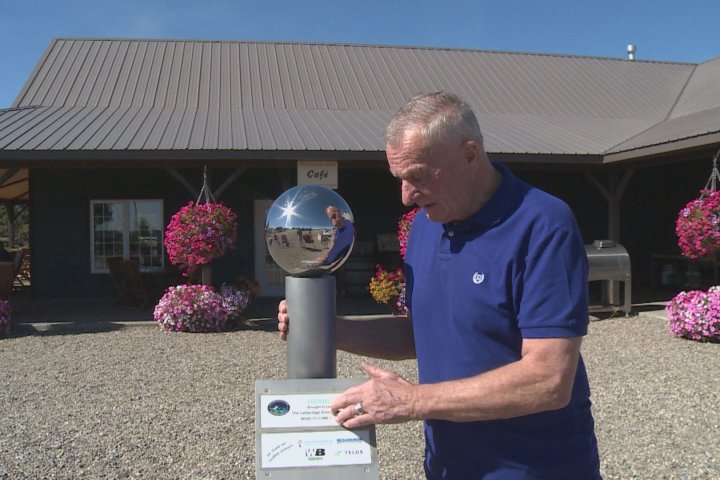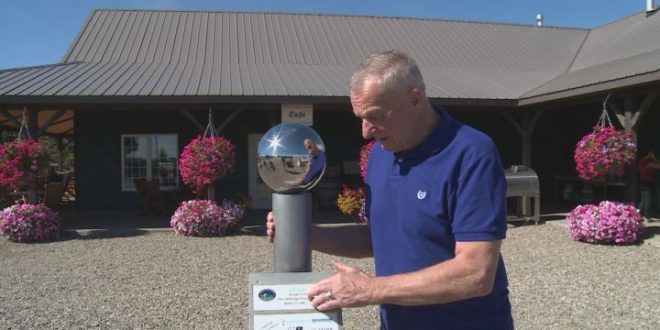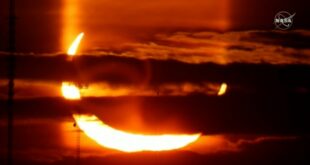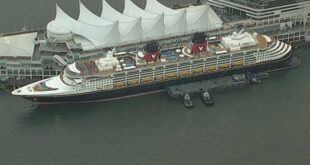
Travelling to outer space may not be a realistic achievement for the average person, but the Lethbridge Astronomy Society is bringing a little piece of the solar system down to Earth.
Around 17 years ago, member Klaus Jericho had the idea to create a scaled-down model solar system that would fit within the city of Lethbridge.
“Now we are in 2021, and it’s finally coming to fruition, so this is very exciting for me,” he said.
With the help of several organizations, the project has come to life.
Tom Anderson, president of the Lethbridge Astronomy Society, said the concept uses the dome of the clock tower on the historic post office building on 4 Avenue S. as a starting point.
“The basic idea is that we imagined that we shrink the sun down to the size of the dome on the post building,” he explained.
“So if the sun is that big, it’s five-and-a-half metres in diameter. So if that’s the case, then how big would the planets be in relation to that? Whereabouts would their orbits lie in relation to that?”
The answer: all around the city.
Mercury, Venus, Earth and Mars all reside in proximity to the downtown, represented by solid steel spheres sized down to a 1:253,000,000 ratio.
Jupiter is across the river at the University of Lethbridge, while Uranus is at Broxburn Vegetables and Café. Neptune is located at Park Lake Provincial Park.
One completed, Saturn will sit at Chinook High School. The gaseous planets were constructed from hollowed-out steel as opposed to solid steel.
At each location, visitors can scan a QR code to learn more about each planet.
“Not only is this exciting for people with an inherent interest in astronomy, but where they’ve placed the planets or the globes are at some of the great local attractions in town,” said Stephen Braund, the marketing director of Tourism Lethbridge.
Daniel Heaton, the director of facility services at the Lethbridge School Division, said Saturn is taking longer to complete due to the scale and complexity of the model.
He said it should be completed in the next two weeks.
“We looked at trying to use lighter materials for the rings, such as a plastic,” he said. “(But) it would not survive in the winds or the winter. So we came back to stainless steel, and we’re actually water-cutting the rings into the stainless steel to mount onto a column out front of the main doors at Chinook High School.
Saturn and Jupiter were paid for by the Lethbridge School Division and the University of Lethbridge respectively.
The Lethbridge Astronomy Society is looking to install official plaques at each of the locations before they hold a grand opening for the project.
[ad_2]You can read more of the news on source
 Travelsmart
Travelsmart



